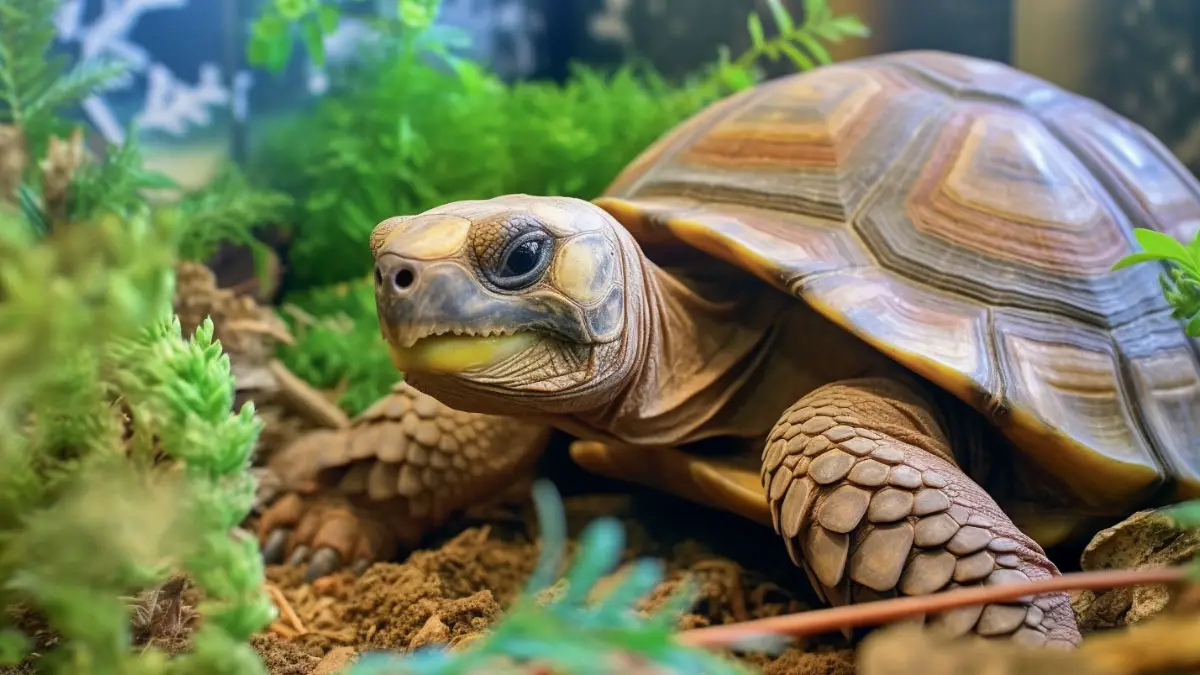Tortoise Substrate Options For Common Tortoises
Substrates are the materials that line up the bottom of tortoise habitats. They provide the tortoise with a natural, insulated, and safe environment. Substrates also help regulate moisture levels within the enclosures.
So what is included in tortoise substrate options for common tortoises? It includes natural topsoil, soft sand, coconut fiber, cypress mulch, and wood shavings. And synthetic substrates include reptile carpets, linoleum, ceramic tile, and vinyl flooring.
Keep reading to learn about the different types of tortoise substrate, which ones to pick for your tortoise species, and which ones to avoid.
Common Tortoise Substrate Options
Contents
There are two main types of tortoise substrates available; natural and synthetic.
1. Natural substrates
Natural substrates are those that can be found in the wild. Examples include;
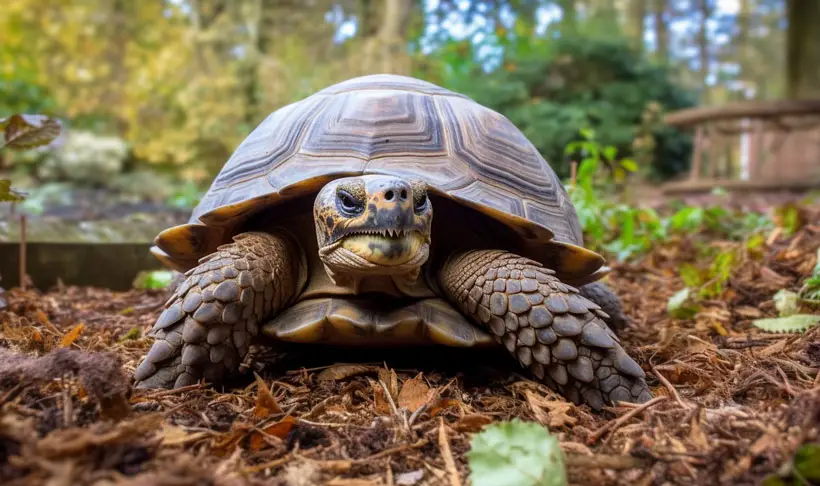
Topsoil
Soil is a great substrate because it helps maintain moisture and is excellent for burrowing.
Coconut fiber
This substrate is made using the fibrous outer husks of coconuts. It’s a great option because it retains moisture well and is safe to ingest.
Cypress mulch
Cypress mulch works well for tortoises that require more humid conditions. It also helps reduce unpleasant smells.
Soft sand
Soft sand is excellent for burrowing and digging. However, you must be careful with sand because it can lead to stomach issues if a tortoise ingests it.
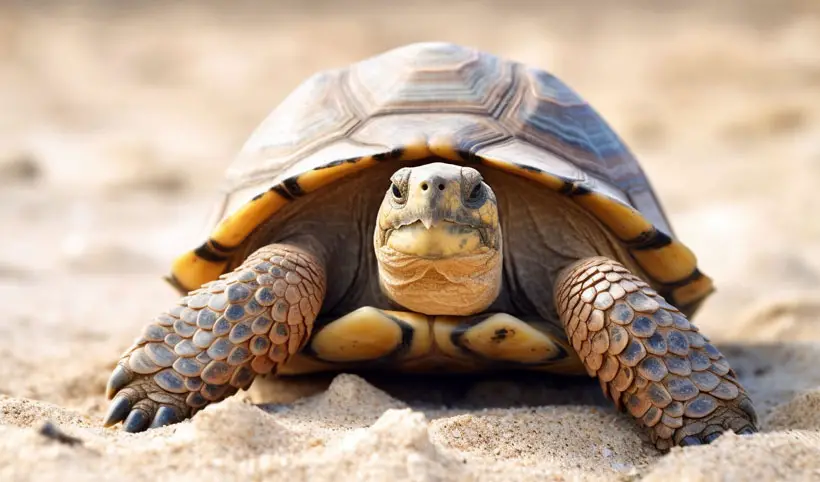
Pebbles
Pebbles and small rocks provide a natural substrate for aquatic enclosures.
Wood shavings
Wood shavings like aspen provide insulation and are great for tortoises that like burrowing.
Moss
Moss is a popular substrate for tortoises that require humid environments because it’s moist and comfortable.
2. Synthetic substrates
Synthetic substrates are made from artificial materials like paper and tiles. Examples include;
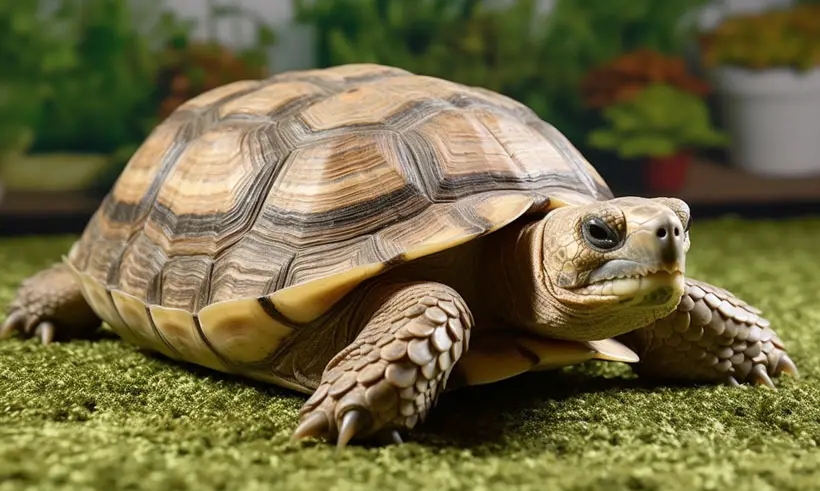
Ceramic tile
These tiles are easy to clean and can be reused several times. Ceramic tiles are ideal for tortoises that require dry surroundings.
Shredded paper
Paper products like newspapers, paper towels, and cardboard can be used as substrates for tortoises that require a clean, dry environment.
Vinyl flooring
Vinyl is made from plastic, PVC, or fiberglass, and it’s great for tortoises that live in a dry environment.
Reptile carpet
A reptile carpet is a soft, absorbing substrate that is easy to use, can be cut to fit any habitat, and is very comfortable for tortoises.
Linoleum
Linoleum is a type of flooring made from cork and wood chips. It’s a great substrate for tortoises that love dry habitats.
Factors To Consider When Choosing Tortoise Substrate
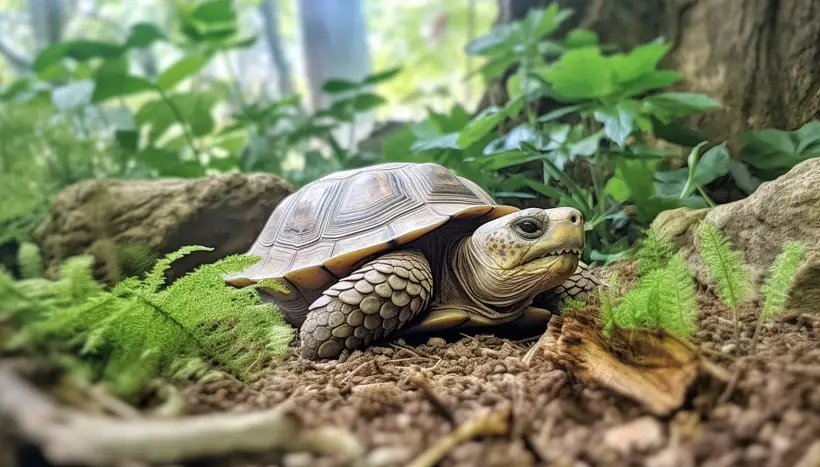
There are several factors to consider when choosing a substrate for your reptile friend, including;
1. Moisture absorption
A substrate should absorb moisture and prevent the habitat from becoming too wet because too much humidity can encourage the growth of harmful bacteria. Coconut fiber and cypress mulch are excellent moisture absorbers.
2. Texture
It’s vital for a substrate to have a texture that feels natural to your tortoise. Otherwise, if the substrate is too jagged or slippery, the tortoise may find it hard to move around comfortably and can get injured.
3. Digestibility
Sometimes tortoises ingest their substrate, so you should choose a digestible material. Avoid materials like cedar and pine that will harm the tortoise when ingested.
4. Ease of cleaning
The substrate you choose should be easy to clean but remember to change it frequently if it is hard to clean.
5. Compatibility
Choose a substrate ordinarily found in the reptile’s natural habitat for compatibility. Also, since different substrates have different insulation capabilities, you must choose the best-suited one for your tortoise.
What substrates would you recommend for common tortoises?
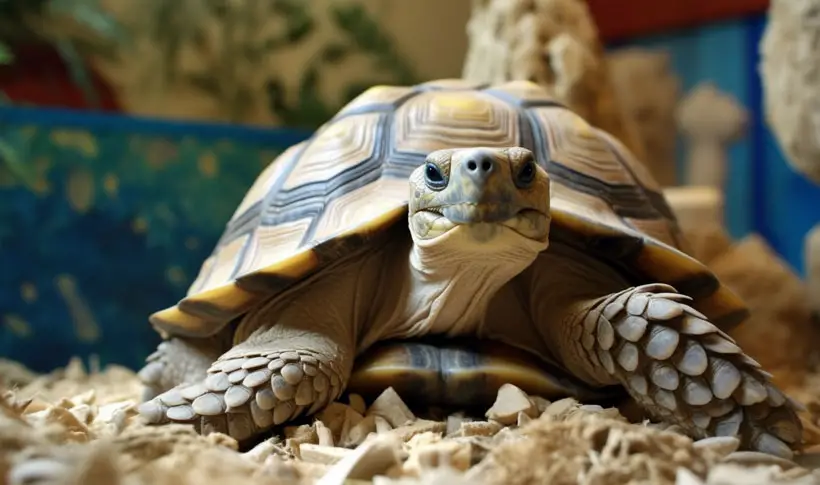
Different tortoise species live in different habitats, so they need different substrate types. Here are a few examples;
Sulcata tortoise
Sulcata tortoises live in dry areas near deserts. Hence, substrates like soft sand, topsoil, and other dry substrates are great for this tortoise.
Leopard tortoise
These tortoises live mainly in the savannas and other grassy areas. Leopard tortoises’ habitats should be filled with dry substrates like soil, soft sand, and coconut fiber.
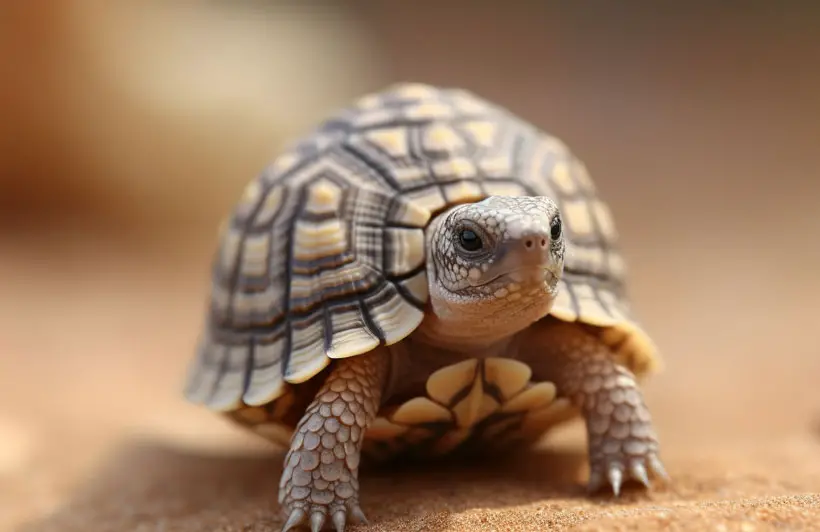
Greek tortoise
Greek tortoises thrive in habitats filled with aspen wood shavings, a sand and soil mixture, or cypress mulch substrate.
Hermann tortoises
Hermann tortoises love burrowing, so the chosen substrate should comfortably accommodate this activity. Substrates like aspen shavings, coconut husk, topsoil, and play sand are great options.
Russian tortoise
These tortoises don’t like moisture, so they need a dry substrate with poor moisture absorbency. Some suitable substrates for Russian tortoises include dry soil, coconut coir, cypress mulch, or wood chips.
How Often Should A Tortoise Substrate Be Swapped Out?
How frequently you change tortoise substrate depends on the enclosure size, the tortoise population, and how much waste they produce. Check the tortoise enclosure regularly for any signs of excessive waste, mold, and smelly odors.
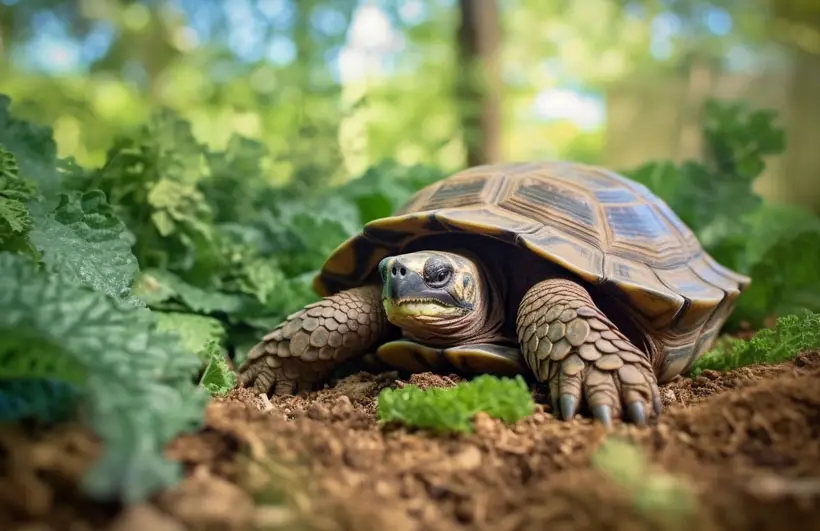
A large enclosure with many tortoises will require substrate change more regularly than a small enclosure with a single tortoise. Since it’s vital to maintain a clean environment for tortoises, a good rule of thumb is to swap substrate out after every few months.
Which Substrate Materials Should I Avoid?
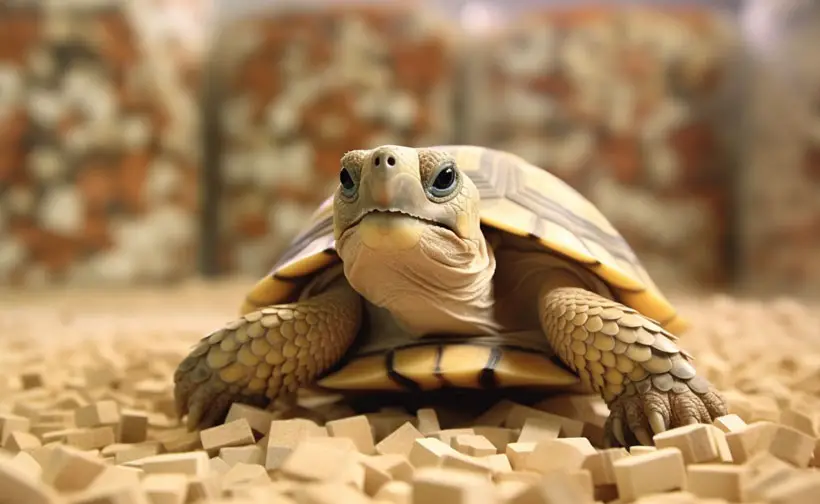
Some substrate materials are dangerous for tortoises because they are indigestible or contain harmful chemicals. They include;
1. Walnut shells
Walnut shells are one of the most dangerous substrates for tortoises for the following reasons;
- They have sharp edges that can cut a tortoise’s feet or harm its gastrointestinal tract when swallowed.
- When ingested, they may block the alimentary canal, causing digestive problems.
2. Cedar and pine
Cedar and pine contain oils that are harmful to tortoises when inhaled or ingested.
3. Sand
Sand causes compaction when ingested because it is heavy. It collects along the bottom of the digestive tract and eventually causes blockages.
FAQs
Here are some answers to common questions about tortoise substrates.
The depth of substrate needed depends on the tortoise species. Some tortoises like shallow substrates, while others prefer deep layers. To err on the safe side, consult your local vet before laying down substrate for your tortoise.
Yes. You can mix different substrates to create the ideal blend for your reptile friend. For instance, you may mix coconut fiber with soft sand to make a substrate blend that is moisture-absorbent and nutrient-rich.
Yes, you can reuse some types of substrate. However, you must thoroughly clean the substrate to eliminate harmful bacteria before reusing it.
Conclusion
Common substrate options for tortoises include topsoil, soft sand, wood shavings, cypress mulch, ceramic tiles, linoleum, and reptile carpets. When choosing a substrate, consider moisture absorbency, ease of cleaning, compatibility, and digestibility.
Materials like walnut shells, sand, cedar, and pine can harm tortoises, so avoid using them as substrate. Also, since substrate can accumulate dirt and grow harmful bacteria, it is vital to change it frequently.

